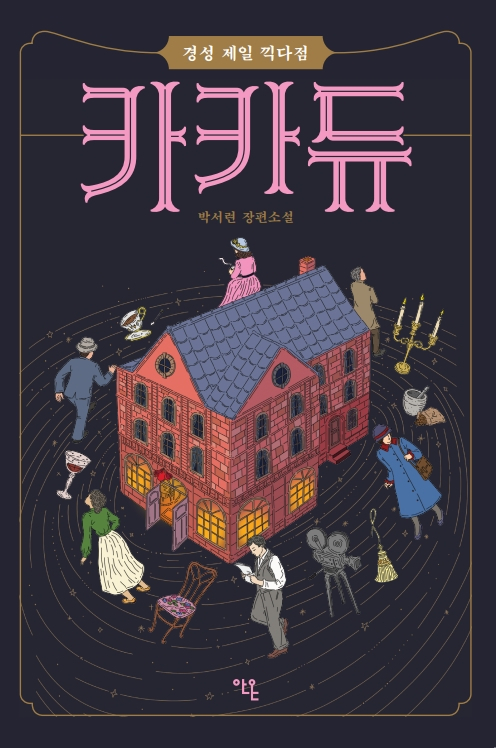[New in Korean] In colonial Gyeongseong, young artists gather at Western-style cafe Kakadu
이 글자크기로 변경됩니다.
(예시) 가장 빠른 뉴스가 있고 다양한 정보, 쌍방향 소통이 숨쉬는 다음뉴스를 만나보세요. 다음뉴스는 국내외 주요이슈와 실시간 속보, 문화생활 및 다양한 분야의 뉴스를 입체적으로 전달하고 있습니다.

"Kakadu"
By Park Seol-yeon
Anonbooks
A Western-style cafe called Kakadu opens in the bustling heart of Gyeongseong, as present-day Seoul was called during the Japanese colonial era. The city is evolving with the echoes of the March 1st Movement still lingering in the air.
The cafe is owned by filmmaker Lee Kyung-son, who experiences fleeting triumphs and frequent failures alongside his enigmatic cousin, Alice Hyun.
Kakadu becomes a gathering place for young artists who discuss literature, film, and love, while secret affairs begin to unravel.
The story follows Lee, who, born and raised in an affluent household, chooses the path of an artist. He empathizes with the fervor of the independence movement but compromises, frustrated by the harsh realities of the colonial era.
Lee is at the center of the burgeoning art scene, alongside other historical artists and figures who make appearances throughout the novel.
Hyun's life is not as thoroughly illuminated as Lee's. Born in Hawaii, she is a US citizen and goes by the name Alice before getting her Korean name, Mi-ok. She is greatly influenced by her father, a Christian pastor devoted to the independence movement.
Writer Park Seol-yeon skillfully weaves historical facts with her storytelling, filling in the gaps in record with her narrative imagination, as she did in her previous award-winning novel, "Kang Ju-ryong, the Woman in the Air."
By Hwang Dong-hee(hwangdh@heraldcorp.com)
Copyright © 코리아헤럴드. 무단전재 및 재배포 금지.